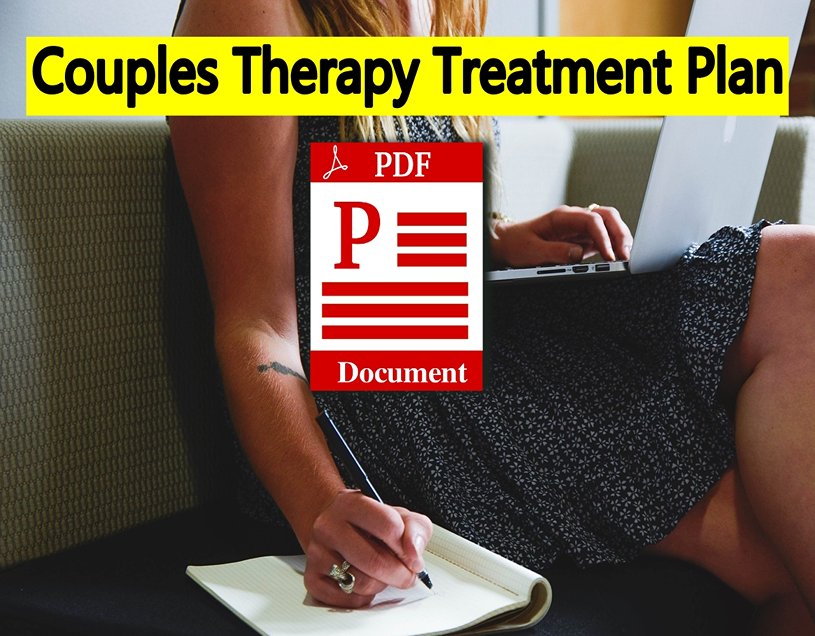[PDF] Couples Therapy Treatment Plan Pdf 2024
Definition of couples therapy treatment plan
A couples therapy treatment plan refers to a structured approach that aims to address and improve the relationship dynamics between two individuals in a romantic partnership. It involves a collaborative effort between the therapist and the couple, where specific goals and strategies are outlined to help the couple navigate through their challenges and achieve a healthier and more fulfilling relationship. This type of therapy typically focuses on enhancing communication, resolving conflicts, and fostering greater understanding and empathy between partners. [PDF] Couples Therapy Treatment Plan Pdf 2024
Importance of couples therapy in improving relationships
Couples therapy plays a crucial role in improving relationships by providing a safe and supportive space for couples to address their concerns and work towards solutions. It offers an opportunity for both partners to express their feelings and needs and for the therapist to provide guidance and facilitate effective communication. By identifying and addressing underlying issues, couples therapy can help break negative patterns and build a foundation of trust and mutual respect. Additionally, couples therapy can help couples develop the necessary skills and tools to navigate future challenges and maintain a healthy and fulfilling relationship in the long term.
Overview of the essay’s structure
The essay will begin by providing an introduction to the topic of couples therapy and its importance in addressing relationship concerns. It will then delve into the various techniques and approaches used in couples therapy, such as cognitive-behavioral therapy and emotionally focused therapy. The essay will also explore the role of the therapist in facilitating effective communication and guiding the couple towards solutions. Additionally, it will discuss the potential benefits and outcomes of couples therapy, including the development of stronger communication skills, increased emotional intimacy, and a deeper understanding of each other’s needs. Finally, the essay will conclude by emphasizing the importance of ongoing commitment.
Theoretical Approaches in Couples Therapy
Brief explanation of various theoretical approaches in couples therapy (e.g., psychoanalytic, behavioral, systemic)
Each theoretical approach in couples therapy offers a unique perspective on the dynamics of relationships and provides different strategies for addressing issues. The psychoanalytic approach focuses on exploring unconscious motivations and past experiences that may be influencing current relationship dynamics. Behavioral approaches, on the other hand, emphasize the role of learned behaviors and aim to change maladaptive patterns through techniques such as communication training and problem-solving skills. The systemic approach views the couple as part of a larger system, taking into account the influence of family and societal factors on the relationship. By understanding the strengths and limitations of each approach, therapists can tailor their interventions to the best
Benefits and limitations of each approach
Benefit the specific needs of the couple. The psychodynamic approach, for example, allows therapists to explore deep-rooted issues and past experiences that may be contributing to current relationship difficulties. This can provide valuable insight and help individuals understand the underlying causes of their behaviors. However, it may not always provide concrete solutions for addressing these issues in the present moment.
Importance of tailoring the treatment plan to the couple’s specific needs and goals
Tailoring the treatment plan to the couple’s specific needs and goals is crucial to achieving successful outcomes in therapy. Each couple comes with their own unique set of challenges and aspirations, and it is essential for therapists to consider these factors when designing an intervention plan. By taking into account the couple’s specific needs and goals, therapists can ensure that the treatment approach aligns with their expectations and desires for the relationship. This personalized approach can enhance the couple’s motivation and engagement in therapy, leading to more effective and lasting results. Moreover, it allows therapists to address the specific issues that are most important to the couple.
Assessment and Initial Phase of Treatment
Importance of thorough assessment to understand the couple’s dynamics, history, and presenting issues
Thorough assessment is crucial in understanding the dynamics, history, and present issues of a couple. This initial phase of treatment provides the foundation for developing an effective intervention plan. Through comprehensive assessment, therapists can gain insight into the couple’s communication patterns, attachment styles, and unresolved conflicts. This information is essential in tailoring the treatment approach to meet the unique needs of the couple and address the root causes of their relationship difficulties. Additionally, assessment allows therapists to identify any underlying mental health issues or individual factors that may be impacting the relationship. By thoroughly understanding the couple’s dynamics and history, therapists can identify the underlying causes of their problems.
Identifying individual and relational strengths and weaknesses
Identifying individual and relational strengths and weaknesses is another important aspect of assessment in couples therapy. This involves exploring each partner’s strengths and weaknesses as individuals, as well as their strengths and weaknesses as a couple. Understanding these factors can help therapists determine what resources and skills the couple already possesses and what areas may need more attention and development. By identifying and building upon the couple’s strengths, therapists can help them navigate challenges and create a more resilient and fulfilling relationship. Conversely, identifying and addressing weaknesses can help to prevent further damage and promote growth and healing. Overall, a thorough assessment of individual and relational strengths and weaknesses provides a solid foundation that can help therapists develop a more effective treatment plan.
Developing a collaborative treatment plan with specific goals and objectives
Treatment Strategies and Techniques
A. Communication skills training to improve effective and empathic communication between therapist and client.
B. Conflict resolution techniques to manage disagreements and promote compromise
C. Emotional regulation exercises to manage and express emotions in a healthy way
Addressing Underlying Issues and Patterns
Exploring and addressing underlying individual issues that may between therapist and client.
This may include exploring past traumas, unresolved conflicts, or deep-seated beliefs that are impacting the therapeutic relationship. By addressing these underlying issues, therapists can help clients gain insight and understanding into their own patterns and behaviors, ultimately leading to more effective and lasting change. Additionally, therapists may also need to address any patterns or dynamics that are present within the therapeutic relationship itself. This could involve exploring power dynamics, transference, or countertransference, and working towards establishing a more balanced and collaborative relationship. [PDF] Couples Therapy Treatment Plan Pdf 2024













